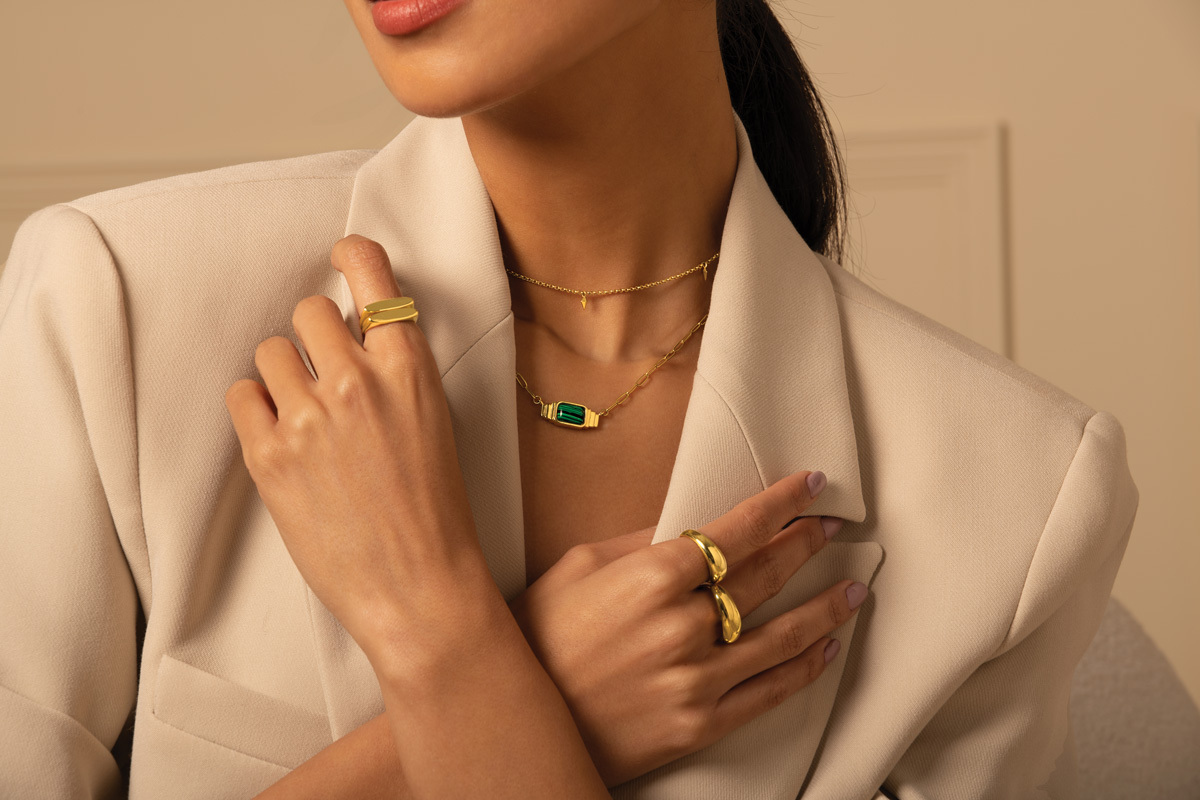
Welcome to the types of horses arranged by their class. There are over two hundred horse breeds estimated to exist as of the modern era. All these horses have been organized into five categories.
Every horse breed—spotted horses breeds, large horse breeds, rare horse breeds, are all distinct in their own way. Nothing is basic when it comes to one of the proudest animals of our world, from the colors of horses to their personalities. However, everyone’s opinion varies. If you’re looking to buy a horse, the horse bay is a site that does online selling of all kinds of horses. If you’re a beginner searching on how to breed horses, it’s not a stroll in the park.
So whether you’re looking into the types of horses to breed horses, sell horses, or simply learn about horses, this horse breeds list is here for you on your journey. Listed below are five classifications of horses: Warmblood, Light (Hot-blood), Draft (Coldblood), Pony, and Feral. Under these classifications are five horse breeds that belong in each category. We’ve put pictures of horses as well for you to know what they look like. So what are we waiting for? Let’s learn about them now.
Warmblood Horses
The first in this list of types of horses is the warm-blooded horse. Sale prices on warm-blooded horses are high because most warm-bloods have gone through stages of thorough breeding. Europeans bred warm-bloods for riding and using to pull carriages or wagons. A warm-blood horse is of medium weight and was bred for equestrian sports.
Holsteiner
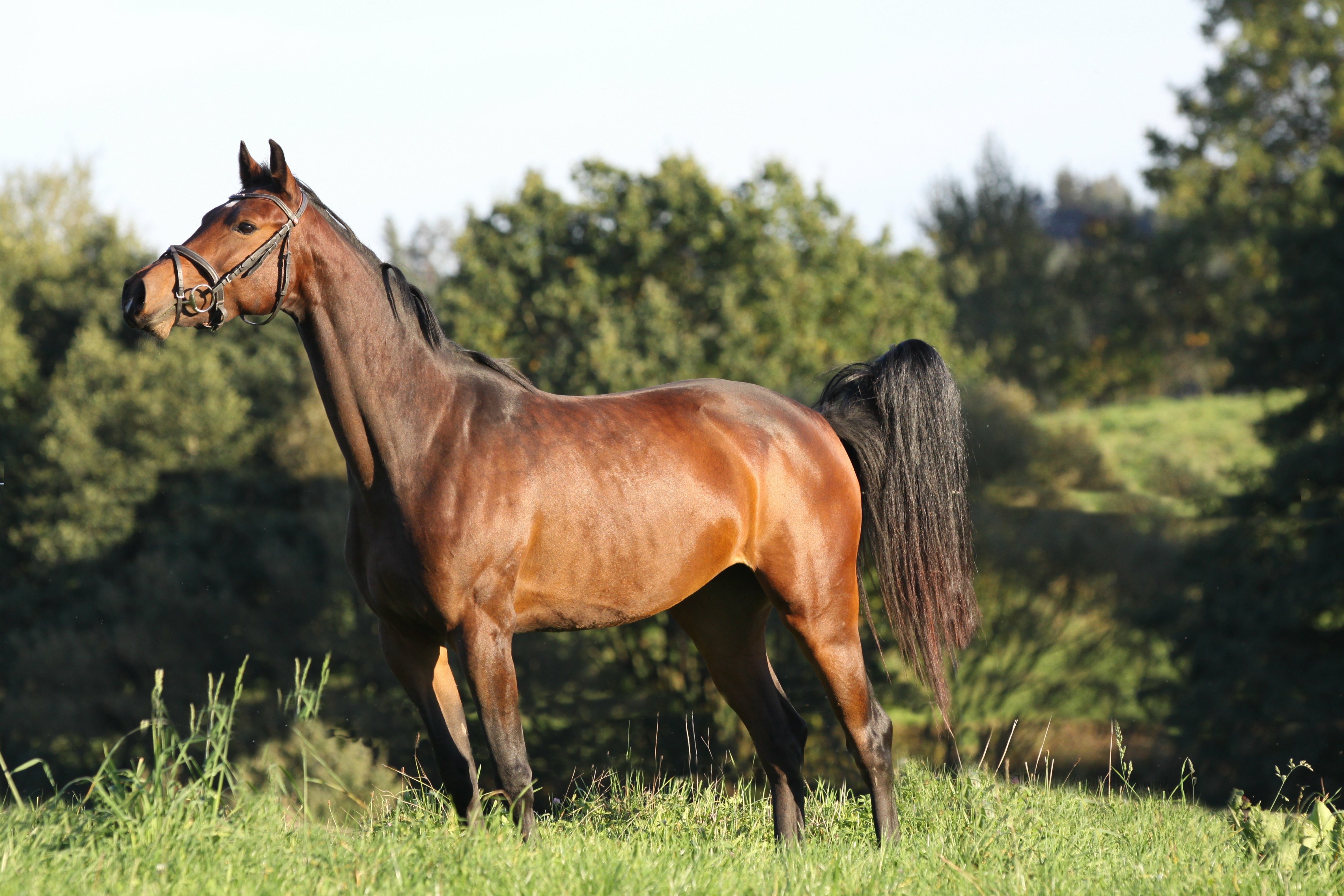
The first type of horses created in Germany is the Holsteiner. People use Holsteiners for driving carriages, dressages, and riding. Holsteiner horses were originally draft horses that aided in farmwork. After the decline of demand for the Holsteiner horse, they were crossbred with thoroughbreds and other horses not included in the warm-blooded class, which created their physical appearance today. Interestingly, the Holsteiner breed was never crossbred with the Trakehner or the Hanoverians like the other horses of the warm-blooded class.
Trakehner
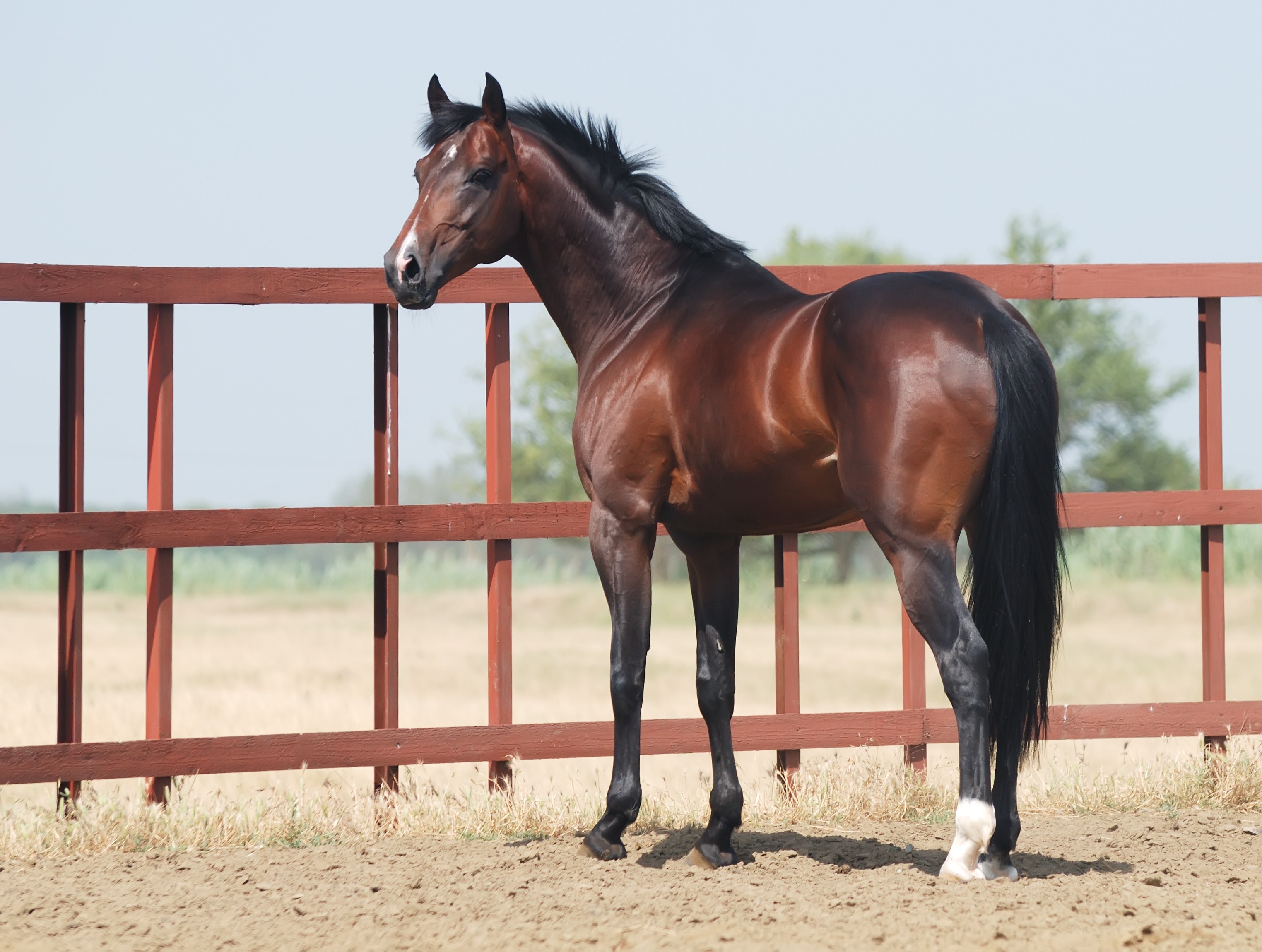
Trakehner is a horse breed that originated in East Prussia. They are descendants of Schwaike horses. King Friedrich Wilhelm I ordered people to create the perfect cavalry horse, thus the Trakehner was born.
Unfortunately, the Second World War had extreme effects on The Trakehner. Another gruesome event the Trakehners experienced was The Flight (Der Trek) which had people and Trakehners running away from the Soviet Union.
In modern times, the Trakehner is now used during Olympic games, eventing, dressages, and show jumping. They aren’t as aggressive as other horses and are friendly by nature.
Camarillo White
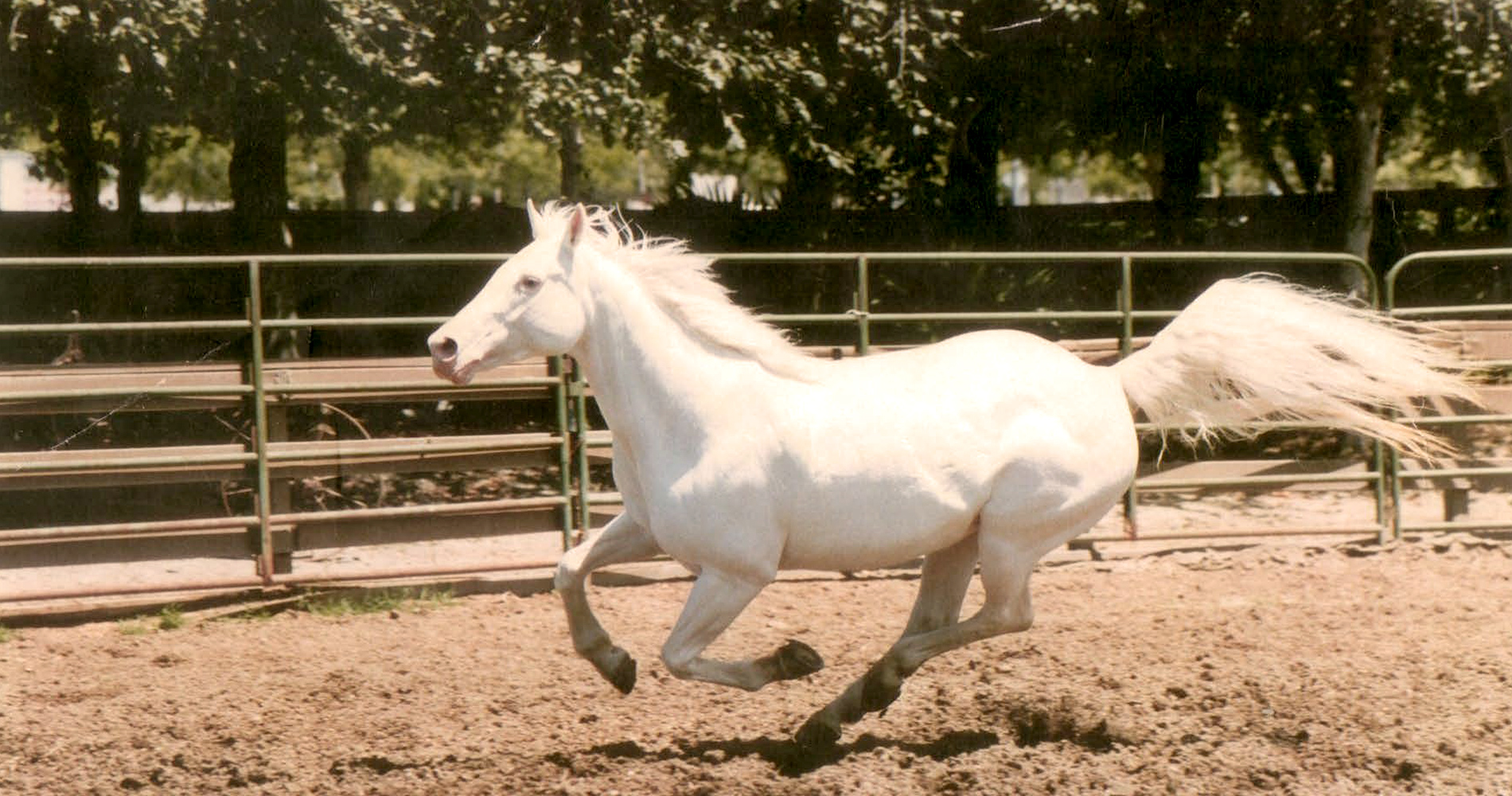
Nothing says albino horse like the Camarillo White. Breeders have never achieved a pure albino horse, hence Camarillo Whites are the closest versions. They are less than a hundred years old and were first sighted in the 1920s. Unlike the other white horses available, Camarillo White has pink skin.
Adolfo Camarillo purchased Sultan, a white stallion, and bred the Camarillo White, hence the name of the horse. Today, it is one of the rarest horse breeds. Adolfo’s daughter, Carmen left a will to auction off the horses after her death. There are 20 known Camarillo Whites living currently. Thus, it is up to private breeders to preserve the breed before it reaches extinction.
Hanoverian
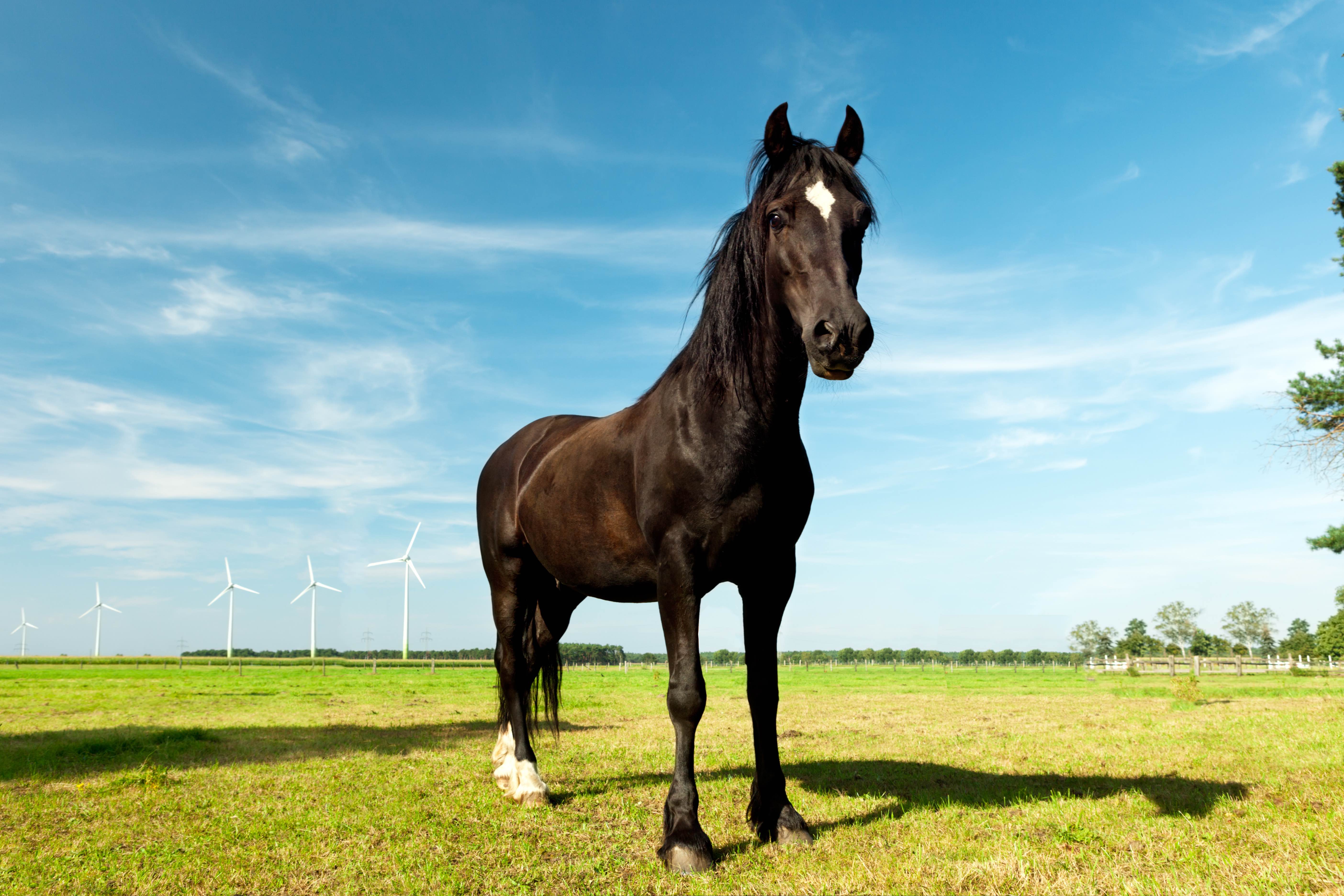
One of the noblest of the types of horses is the Hanoverian breed. You can trace the beginning of the Hanoverian all the way back to 1684. People have been using them for English competitions and Olympic games.
Soldiers used the Hanoverian originally for cavalry. After being crossbred with the Thoroughbred, Hanoverians became more graceful and agile. Hanoverians are now one of the most successful warmblood breed lineages to date.
Canadian Horse

The Canadian Horse is the national horse of Canada. People also call them the French Canadian Horse or Cheval Canadien in French. The breed is a descendant of many draft horses and light horses before it finally became the Canada horse. Historically, breeders began cross-breeding the Canadian Horse with American and British breeds. As a result, they created the perfect horse for riding and driving carriages.
Soldiers used them as cavalry horses during the American Civil War, which caused the endangerment of the breed. People began attempting to preserve the breed despite the threat of machinery, the First World War, and the Second World War. Until now, many consider the Canadian Horse as under a threat of extinction.
Light Horses
Another term for light horses is “hot blood” because of their energetic yet nervous character. They are bred differently compared to warm-bloods. A light horse is the smallest aside from the pony. Despite this, the light class is composed of buff horse types that are all-rounders. They are praised for their stamina, intelligence, and adaptability. Middle Eastern nomads and North African nomads have a special bond with the hot bloods.
Akhal-Teke
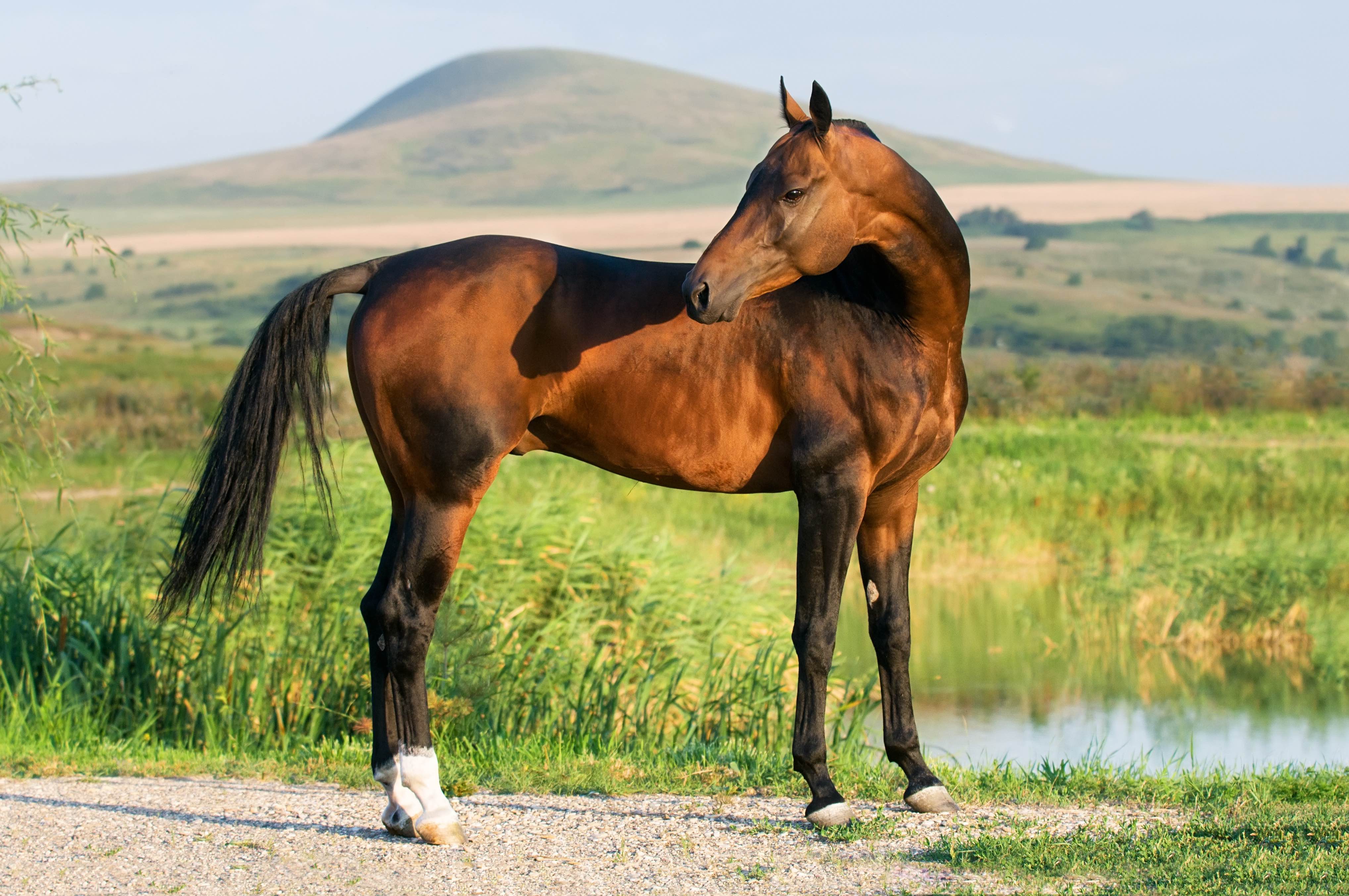
In this list of types of horses, there’s always one that stands out. Voted the most beautiful horse in the world, Akhal-Teke horses have a coating that looks almost metallic and shines noticeably. Turkmenistan is their home country and they have a reputation for their speed, endurance, and intelligence.
Another nickname for the Akhal-Tekes is the Golden Horse. Researchers have not confirmed the origins of the Akhal-Teke. Some scientists and specialists believe they are descendants of the Turkoman horse. The Akhal-Tekes are currently listed as vulnerable. Theories of their endangerment stem from the aggressive inbreeding between the horses.
Thoroughbred
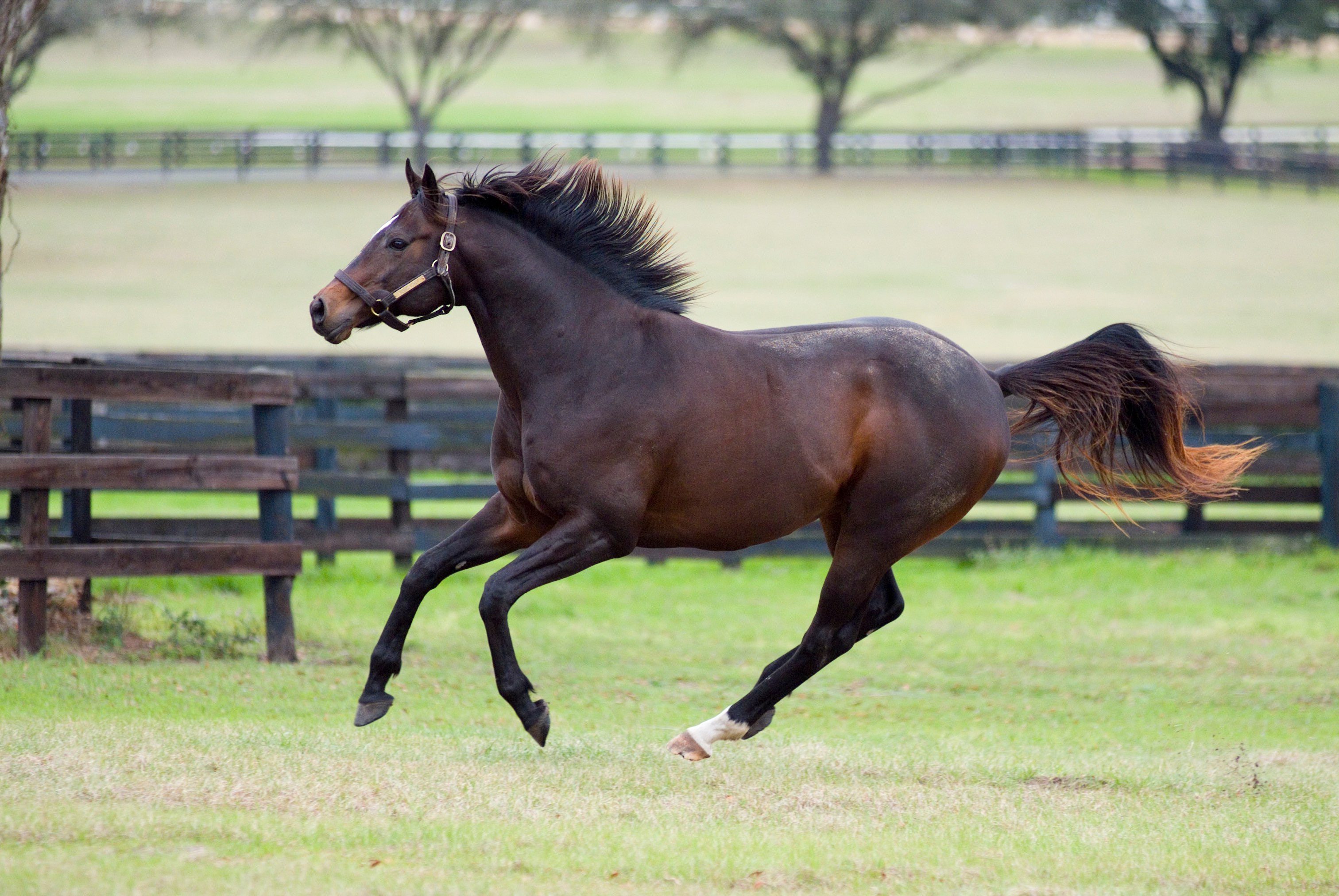
Secretariat is the most famous of all the famous horses around. He was also a thoroughbred, making them one of the most famous horse breeds. Breeders praise them for their high spirits and confidence. All thoroughbreds can be traced back to their original ancestors, which were three specific horses: Darley Arabian, Godolphin Arabian, and Byerly Turk. These three horses were crossbred with native English horses which resulted in the Thoroughbred.
Riders use the Modern Thoroughbreds mostly as racehorses. Their legs have short bones that allow easy striding. While they may be tough, they are also incredibly fast and remain fast even over long distances.
Arabian
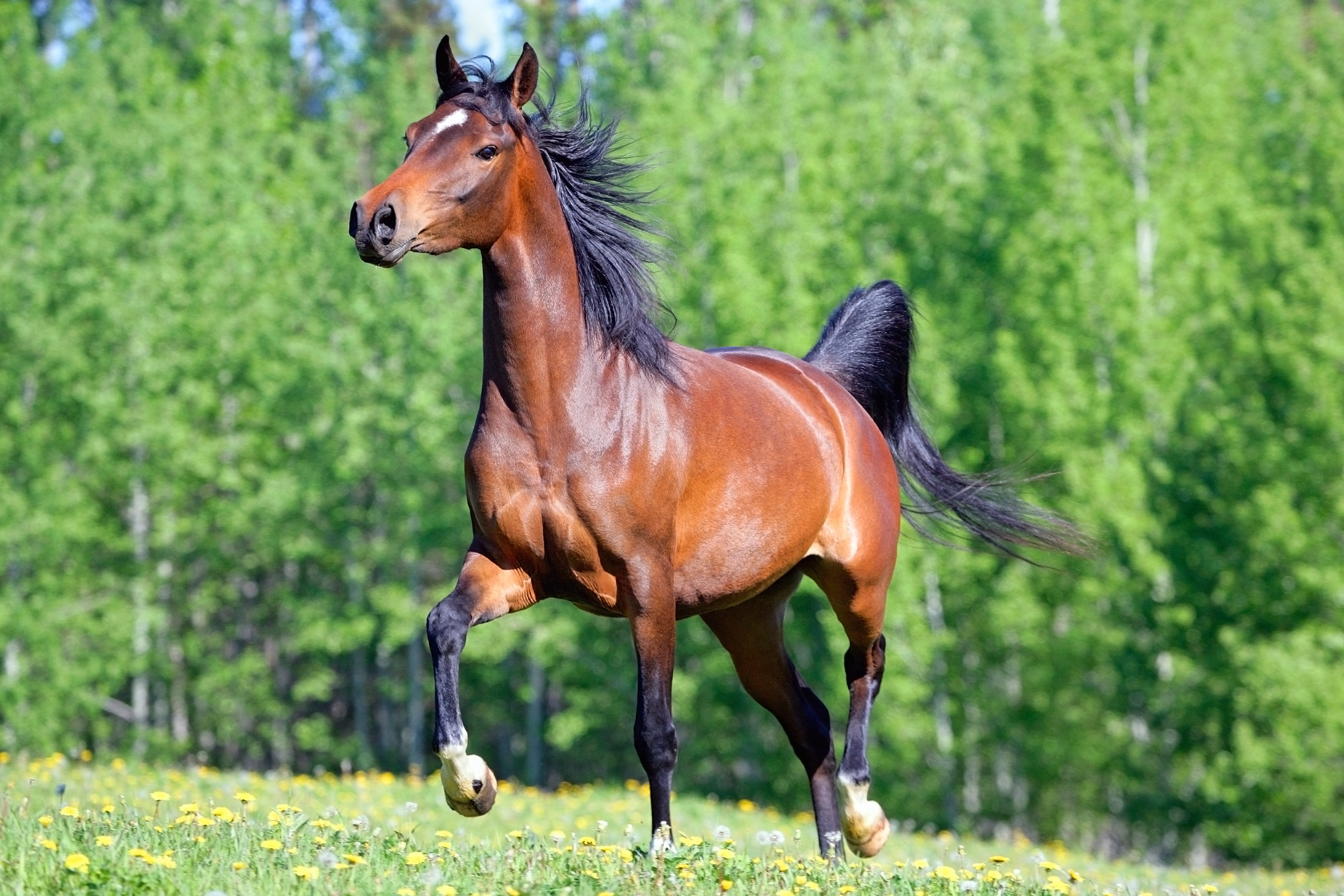
The Arabian horse is one of the most popular horse breeds in the world. Archeologists claimed that Arabian horses are one of the oldest breeds, discovering evidence in the Middle East resembling modern Arabian horses existing in the area 4,500 years ago.
The Bedouin people treasured the Arabian horses and often kept them within their tents to prevent others from stealing them. Thereafter, they began breeding good-natured Arabian horses and strong ones, creating the breed. Today, racers use Arabian horses to take part in equine sports.
Barb
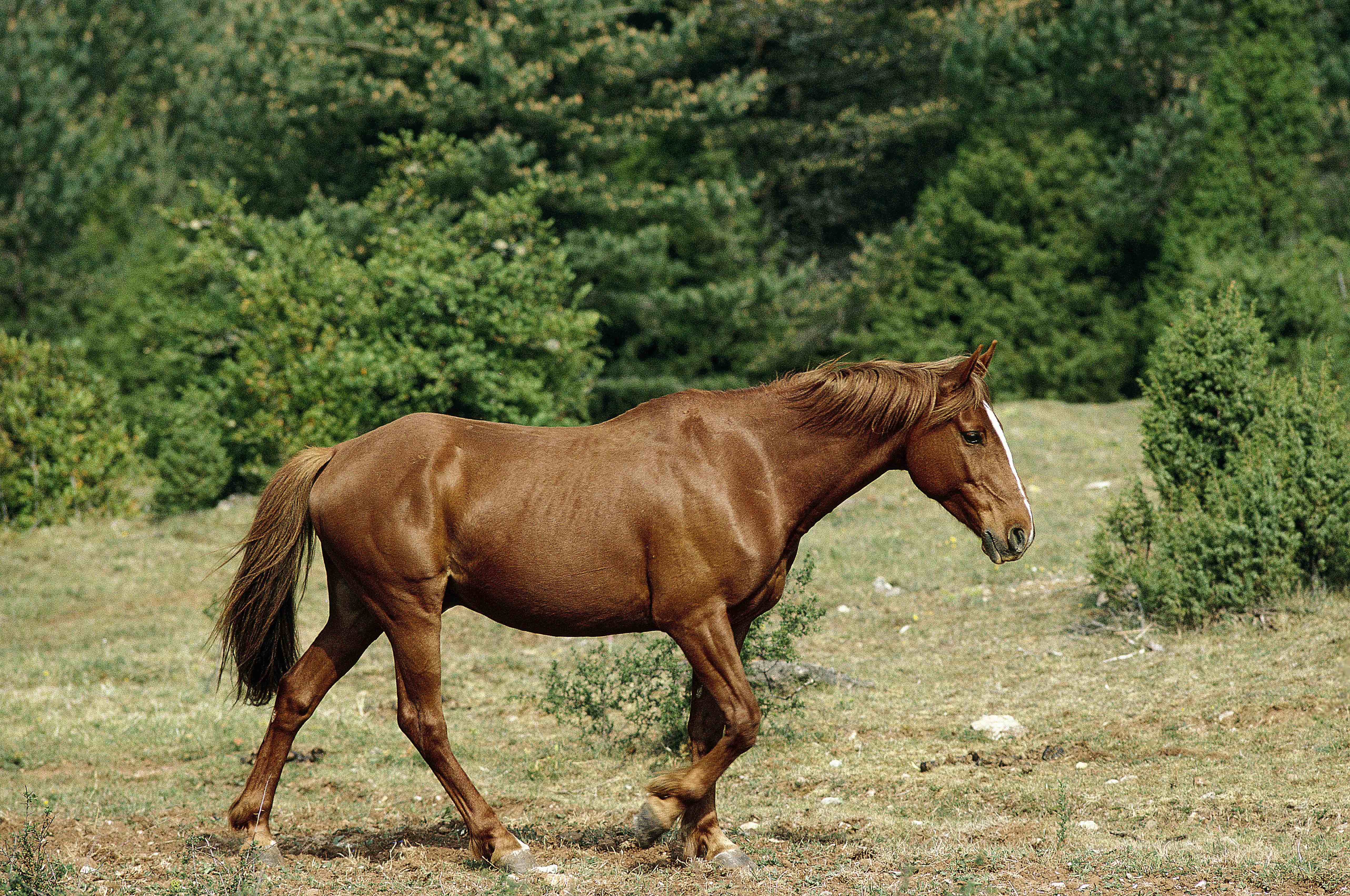
Barb horses originate from North Africa and have close ties with the Berber people and the Amazigh of Maghreb. Most people get the Barb and the Arabian mixed up. Historically, people thought that the Godolphin Arabian was Arabian as well. The truth is that the stallion was from Tunisia, confirming it was actually a Barb.
Barb horses have contributed to many horse breeds such as the Andalusian horse, which was crossbred between Barb horses and Spanish horses. They were once called Numidian horses and described by Roman writer Claudius Aelianus as incredibly fast and tame enough that one would not need to use a saddle. Aelianus states that barb horses would obey simply by a cane.
Lipizzan
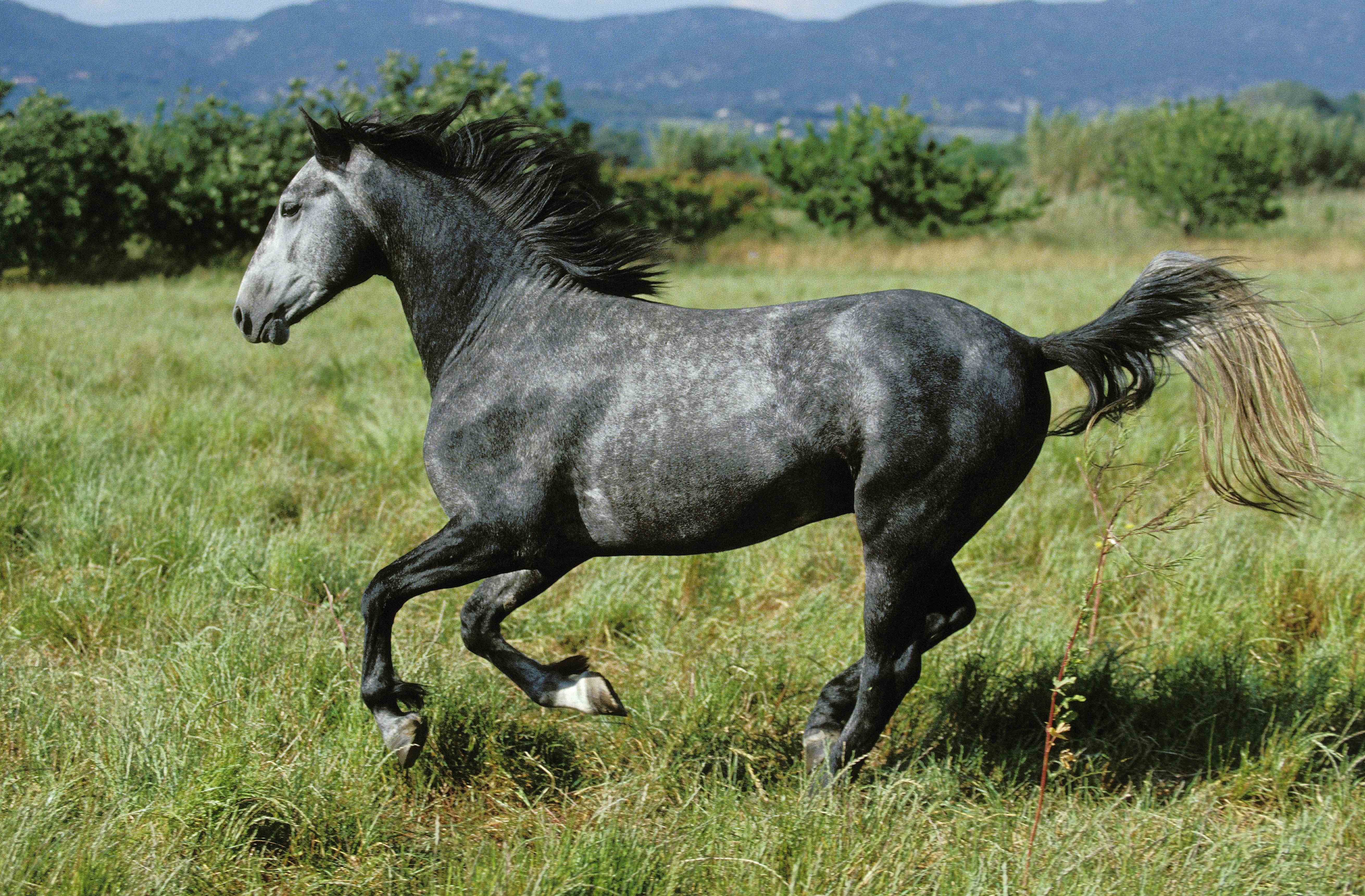
Lipizzan horses were associated with and bred for the Habsburg monarch. People have used these horses three times: the War of the Coalition, the First World War, and the Second World War. Americans began a rescue mission to preserve the breed during the Second World War.
The lifespan of a Lipizzan horse reaches up to thirty years and they can still perform perfectly in their twenties. The Spanish Riding School of Vienna acknowledges that Lipizzan horses are able to perform highly stylized and complicated movements. Breeders have noticed Lipizzan horses are slow to mature.
Draft Horses
The most hardworking of all the types of horses is the draft horse breed. People call draft horses other names like draught and cold-blooded. People use cold-blooded horses more than other classifications of horses. They help people in their farming, carry heavy loads, and even as pleasant companions. Draft horses include some of the tallest horse breeds in the world and are considered the class of big horse breeds.
Shire
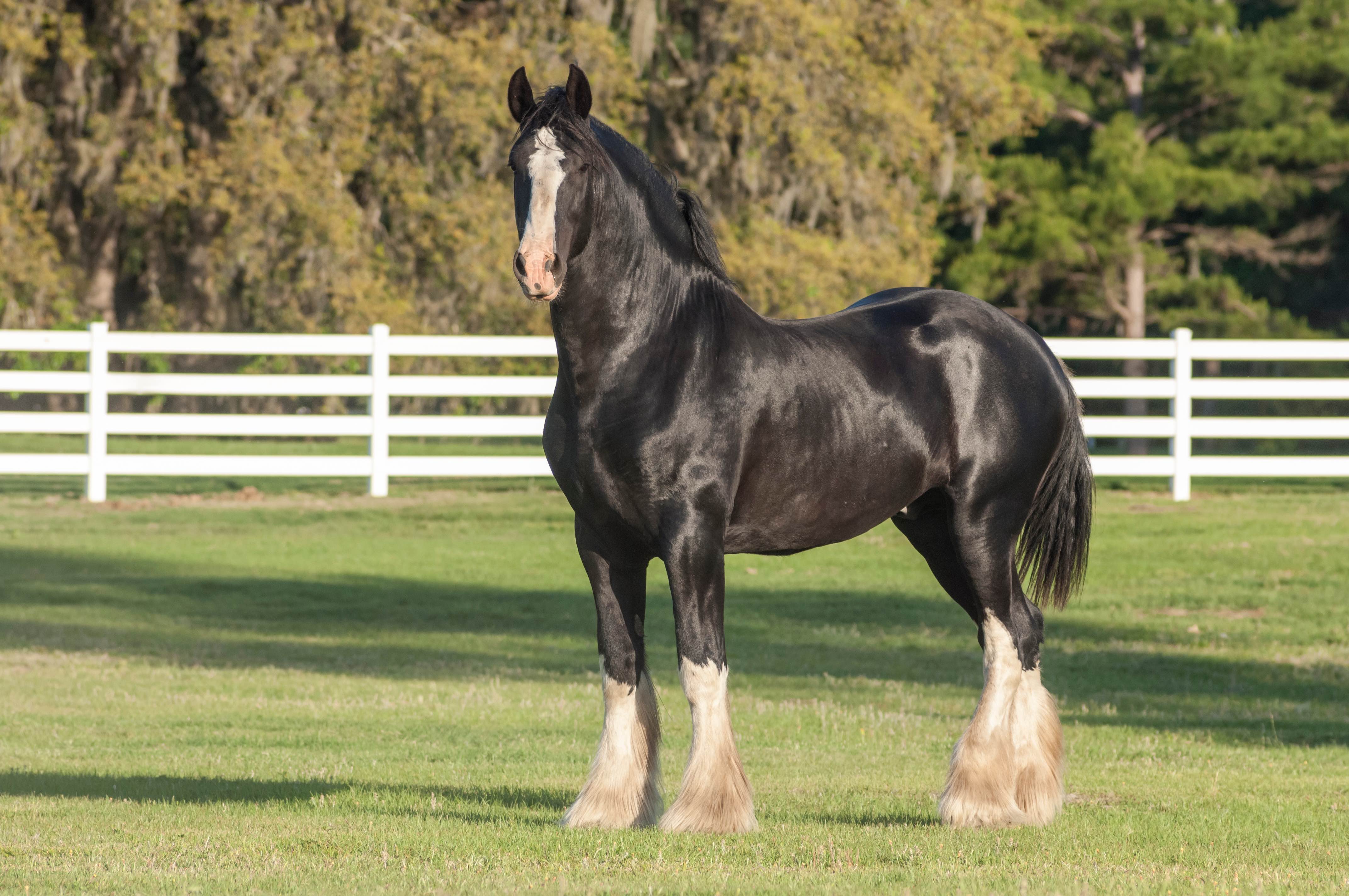
The Shire is the biggest horse breed in the world. The Shire originated in England and are descendants of the English Great Horse, which carried fully armored men weighing about four hundred pounds. Breeders developed the Shire horse into a draft horse in the later part of the 18th century.
Shire horses are calm and collected. This is probably because of selective breeding when they were bred to be used for battle as cavalry.
Belgian
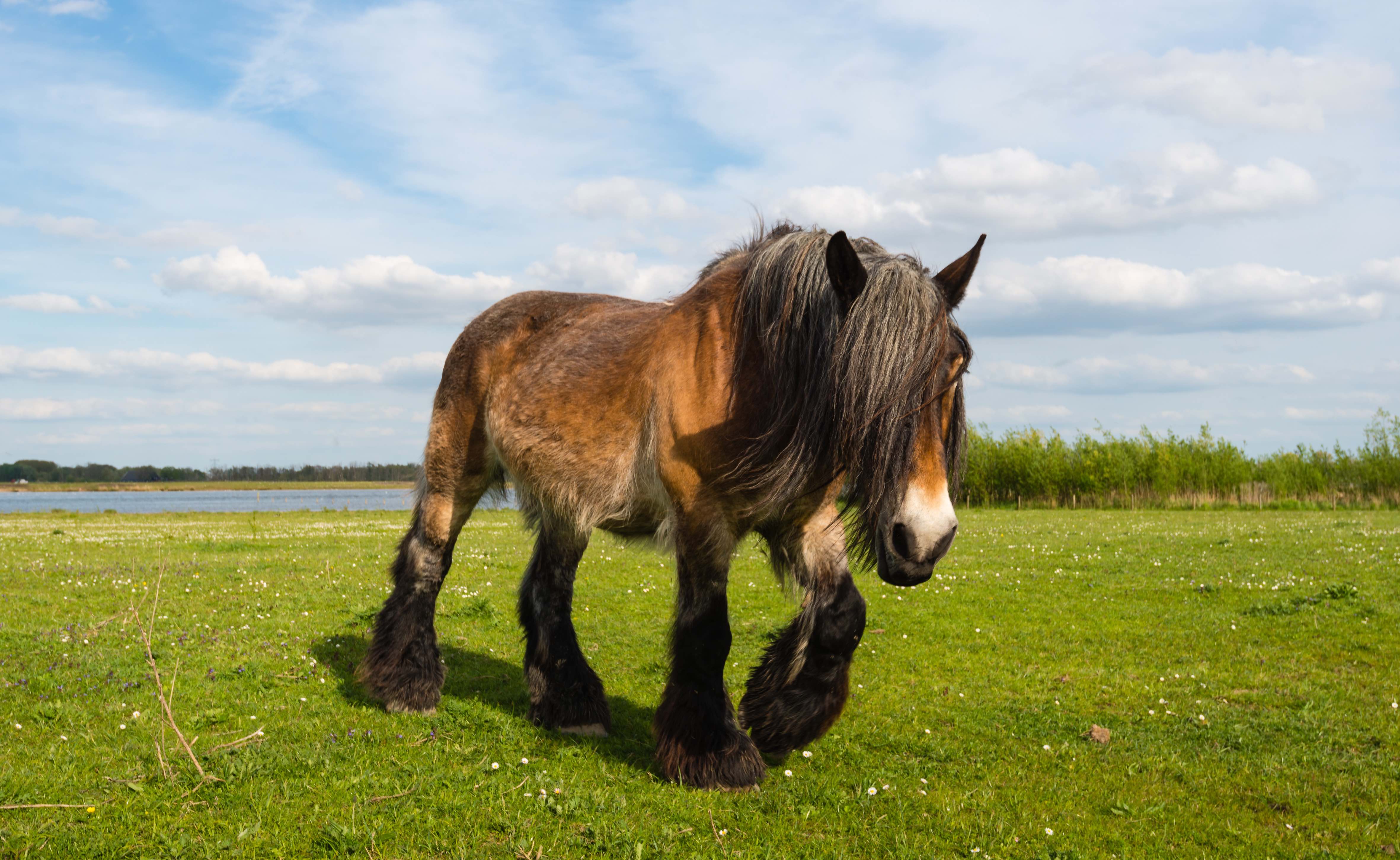
Belgian horses could be easily associated with being a buff horse because of their association as part of the heavy draft horse. The Belgian horses are descendants of the Flemish Great Horse, which were battle horses during medieval times. Belgian horses have improved since the 1880s.
Despite them being one of the strongest horse breeds out there, Belgians are gentle in nature, similar to the Shire horses, but larger than the Clydesdales. It is common for Belgian horses to carry a genetic disorder known as junctional epidermolysis bullosa, which causes some of their newborns to lose large chunks of their skin and abnormalities that lead to committing euthanasia.
Clydesdale
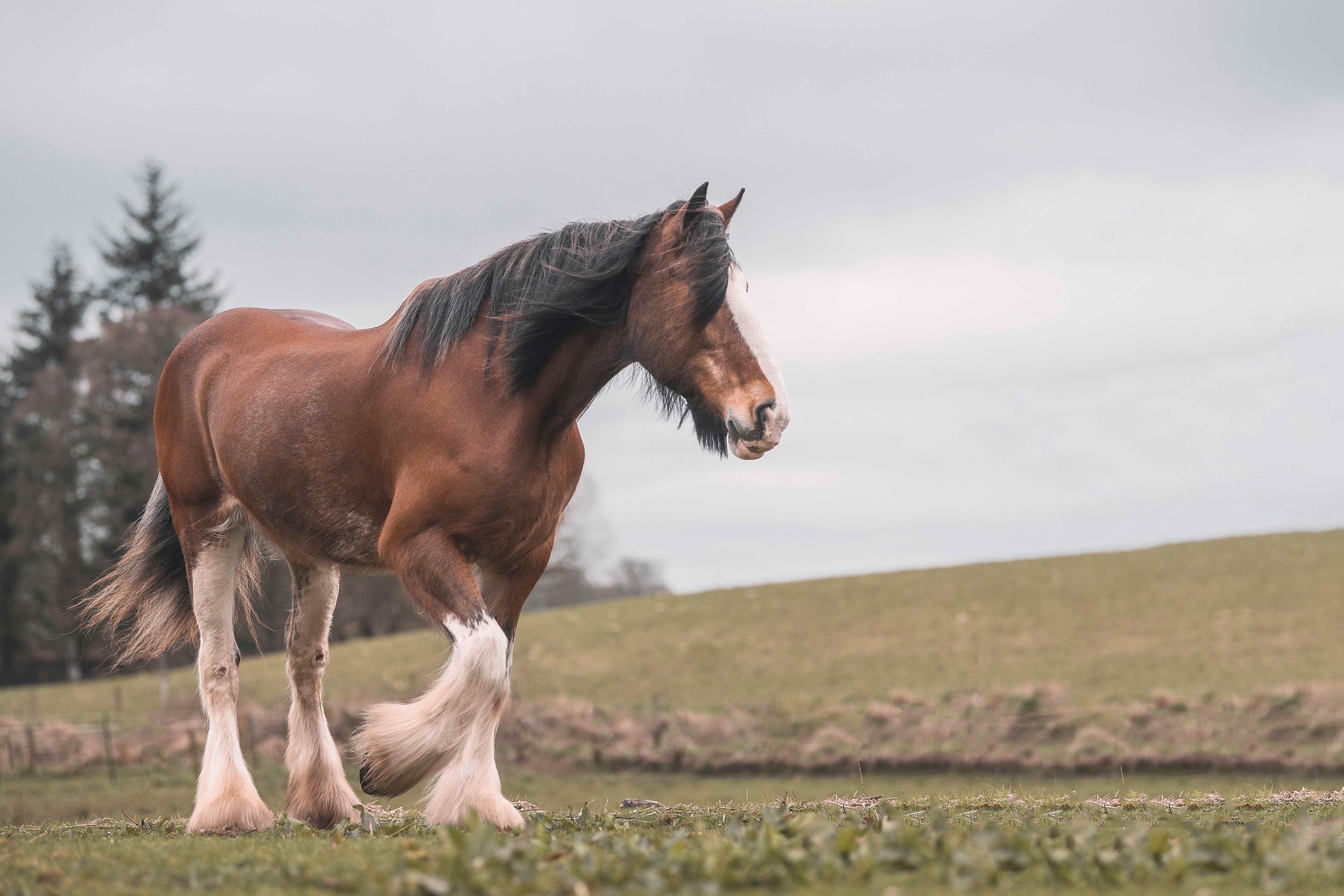
Clydesdale horses are native to Lanarkshire, Scotland. Breeders crossbred Flemish stallions with mares. The breeders then bred them with Shire horses. Clydesdale is named after the River Clyde, which is near Lanarkshire. People used them for road haulage and farm work.
Clydesdales are classified as vulnerable and are close to extinction. While there have been efforts of growth in their population, the Rare Breeds Survival Trust still considers them critically endangered. Nowadays Clydesdales are used as carriage horses, drum horses, and even for publicity by the Anheuser-Busch Brewery.
Noriker
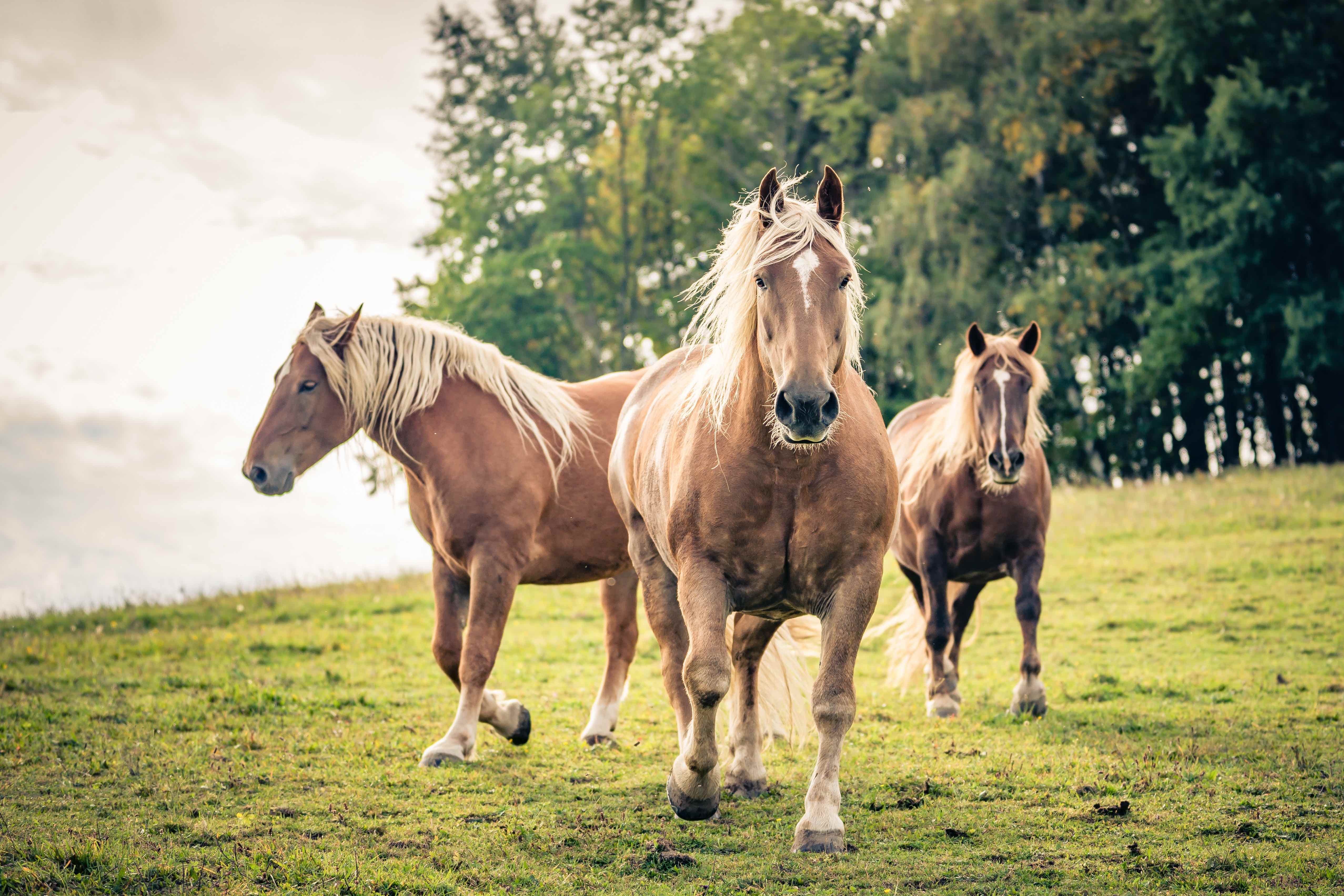
Norikers have many names such as Norico-Pinzgauer and Pinzgauer. Historically speaking, Noriker horses were used for road haulage, just like the Clydesdales. They carried salt, gold, and Celtic iron for trade with wine and spices between Salzburg, Austria, and Italy.
Researchers believe that Noriker originally lived in Grossglockner, the highest mountain in all of Austria. Unlike other draught horses, the Noriker is gifted with climbing because of the environment they were raised in. Norikers, just like most draft horses, are kind and well-mannered.
Dutch Draft
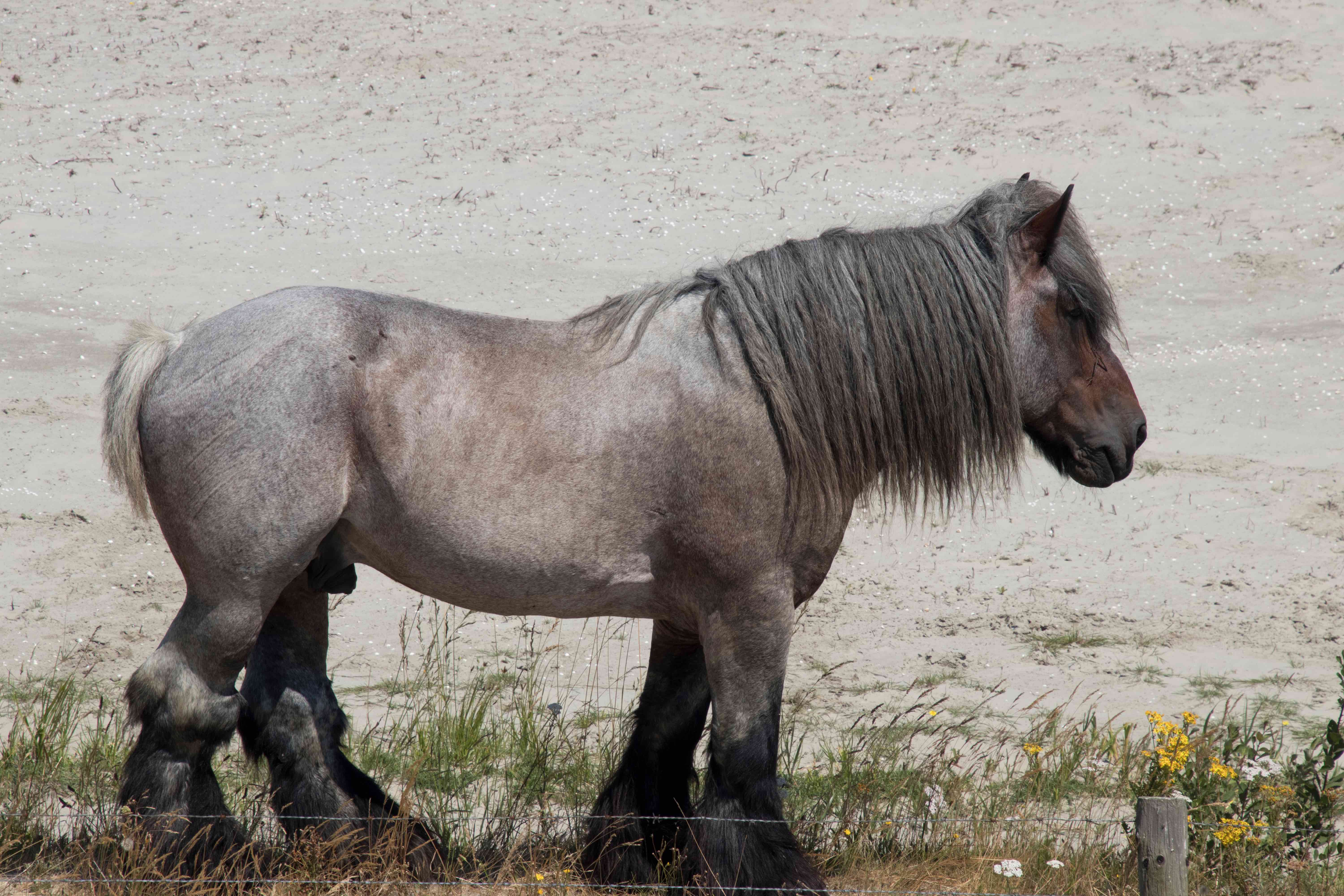
The Dutch Draft also has many names, like the Norikers. They are called the Nederlands Trekpaard, Zeeland Horse, and Zeeuws Paard. The Dutch Draft horse is the product of crossbreeding brabants and Ardennes with local Zeeland mares.
Breeders produced Dutch Drafts in the Netherlands to aid in agricultural progress. The people began working on the production of the Dutch Draft after the First World War. Farmers began using the technological advancements, causing the Dutch Draft to become endangered.
Currently, the Royal Association for the Nederlands Trekpaard and Haflinger and the Foundation for the Working Draught Horse of Zeeland are dedicated to taking care of the horse breed and preserving them.
Pony
Pony breeds are even small types of horses. Experts use the pony class to describe the small-built or compact horses. That’s truthfully one of the more physical differences in a debate between pony vs horse.
Shetland Pony
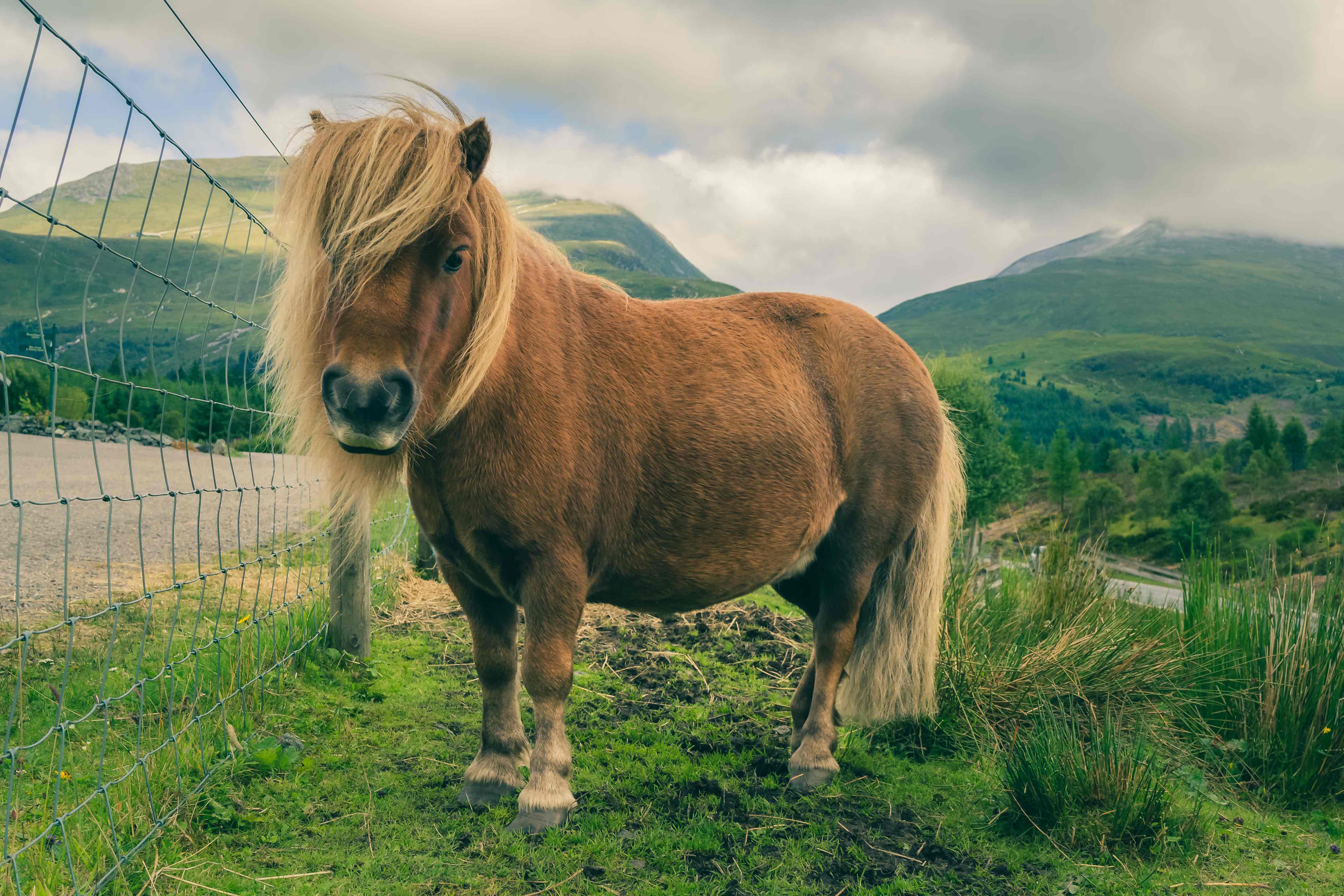
Shetland ponies originate from the Shetland Isles in the north of Scotland. Owners use them as packhorses, driving, and riding. Nordic settlers brought the Celtic Pony. These ponies were then crossbred with local ponies in the Shetland Isles. They come in a variety of colors except for spotted coating. Shetland ponies have small bodies and thick fur to withstand the cold.
People use Shetland ponies for a variety of reasons. Trainers use Shetland ponies to teach children to ride horses. Some trainers even use Shetland ponies to present harness driving. Carnivals use them for quick rides as well. Some disabled people even use the Miniature Shetland Pony as guide horses.
Dartmoor Pony
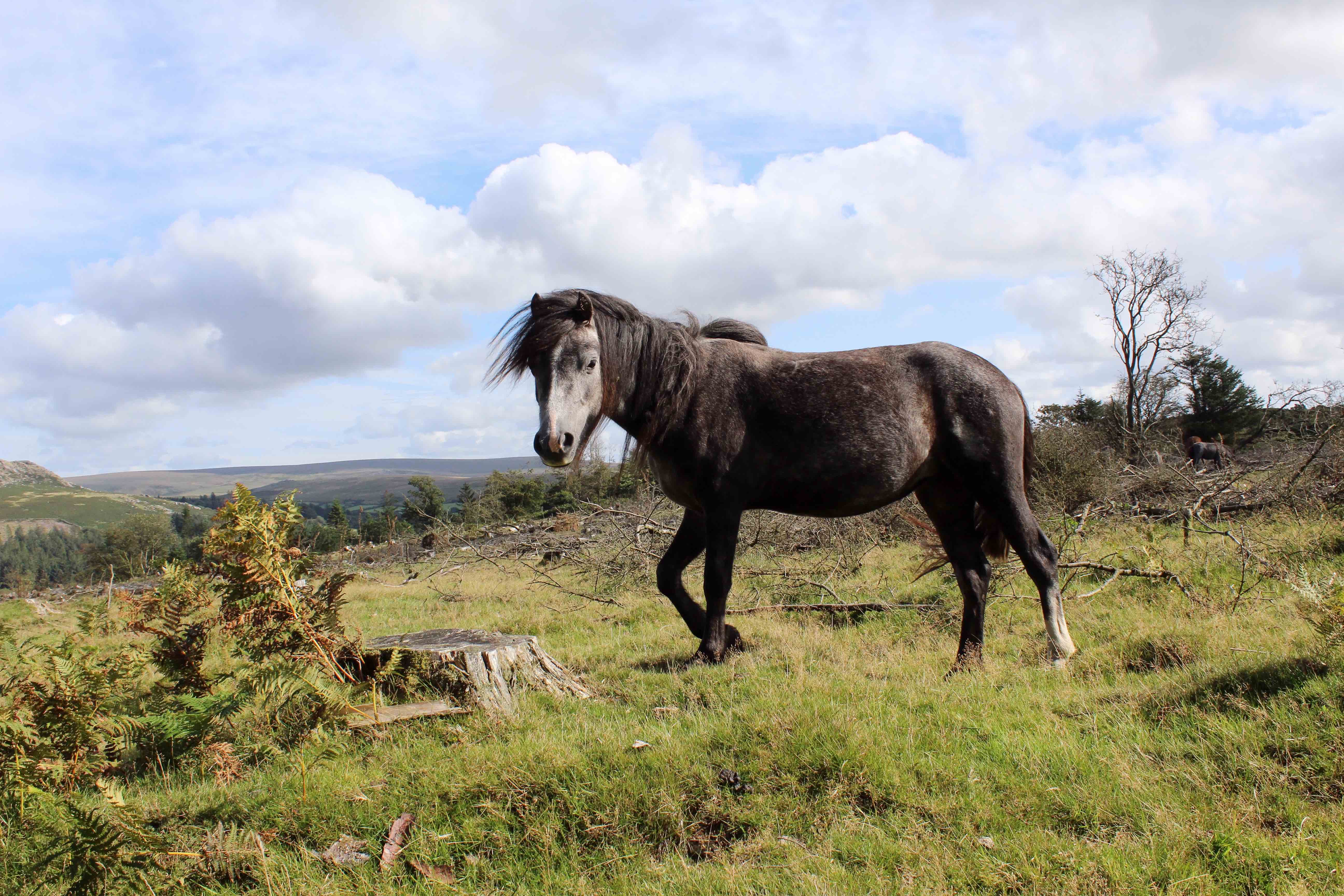
The Dartmoor pony originated in the county of Devon in the Southwest of England. The Rare Breeds Survival Trust group considers them a rare breed. They are perfect for children to ride on and are often featured in county shows.
Dartmoors are also semi-feral, with some being raised in a similar fashion to wildlife reserves. The government protects semi-feral Dartmoors in Dartmoor National Park. Tourists and locals can find them by the moor. The Dartmoor ponies are good-looking and are sturdy enough to carry many things and people. They are one of the nine breeds that are native to the British Isles and are often exported.
Yonaguni Horse

In Japan, the Yonaguni horses are critically endangered. They are one of the few Asian horses on this list of types of horses. They are native to the Yonaguni Island, which belongs to a group of islands called the Yaeyama Islands. There are a total of eight horse breeds whose origins can be traced to Japan, including the Yonaguni.
Researchers have discovered that the Yonaguni horse has closer ties to the Tokara and Miyako small horses of Japan as compared to the Mongolian horses. Since the 1960s, there has been a gradual decline in the number of Yonaguni horses. People have been conserving the breed at a slow but steady pace.
Falabella

Miniature horses are smaller than the average pony. A perfect example is Falabella, which is the smartest of them all. Falabellas are native to Argentina. Falabellas are descendants of the Spanish and Iberian horses. The first of them were bred from local Criollo stock horses in 1868.
The man who managed to inbred the Falabella horse is Juan Falabella who mixed Shetland Pony, Welsh Pony, and small thoroughbreds. The consistency of the small height gave way to the Falabella horse.
Feral Horses
Feral horses are a classification of horses with domesticated ancestors that live freely away from humans. Ferals are the product of domesticated horses that escaped into the wild and bred and behave more wildly than before. People call free-range horses owned by someone semi-feral.
Namib Desert Horse
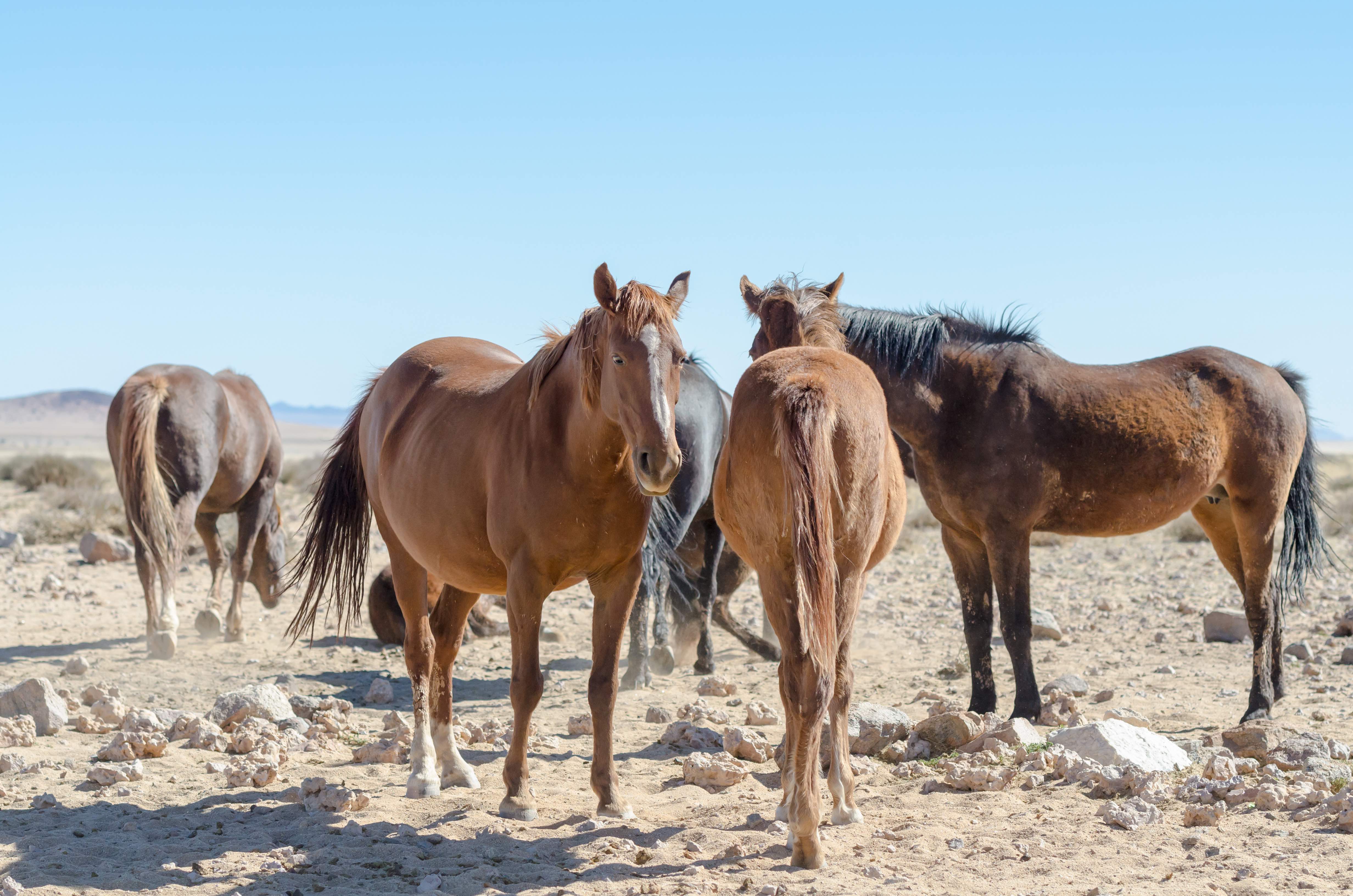
In 2020, CNN published a concerning article regarding the last of Namibia’s wild horses. Diamond prospectors brought horses to the desert. These horses became the ancestors of the Namib Desert Horse. Tourists enjoy watching these feral horses living in harsh but free conditions. Many townsfolk rely on the Namib Desert Horse, such that an economic downfall may happen if the Namib Desert Horse becomes extinct.
The leading cause of the endangerment of the Namib Desert Horse is predatory actions. Some experts say it’s drought. Their foals have a high mortality rate as the sensitivity of these foals to their environment doesn’t ensure their survival.
Mustang
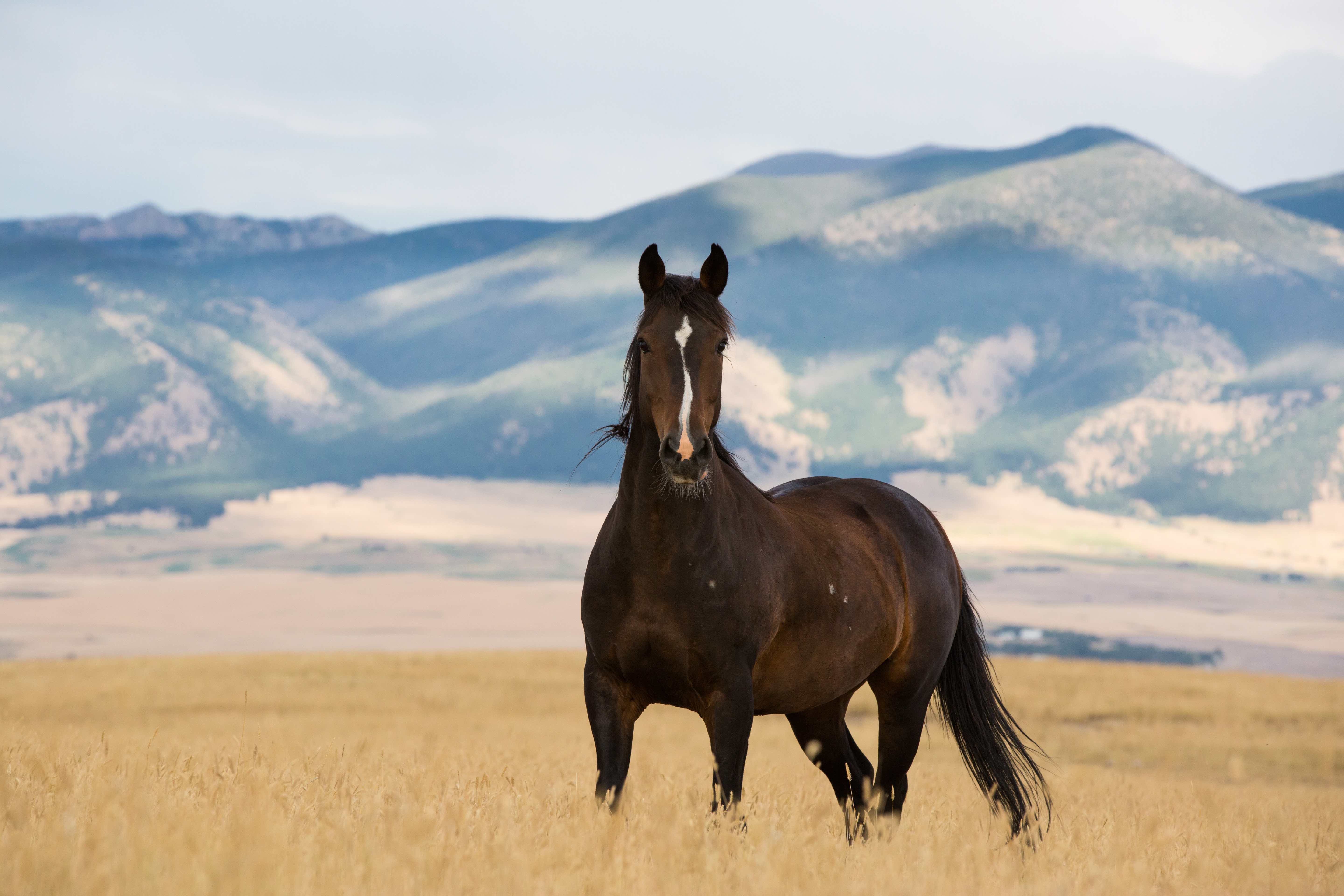
Mustang’s are arguably one of the most famous types of horses there is to date. People affectionately call them America’s wild horses. Breeders can trace them being descendants of Spanish horses. Scientists have noted that some Mustangs have similarities with the Spanish horses. The Kiger Mustang from Oregon is a good example of them.
Trainers describe Mustangs as free-spirited and agreeable. People who have domesticated Mustangs use them for freeriding and endurance training.
Garrano
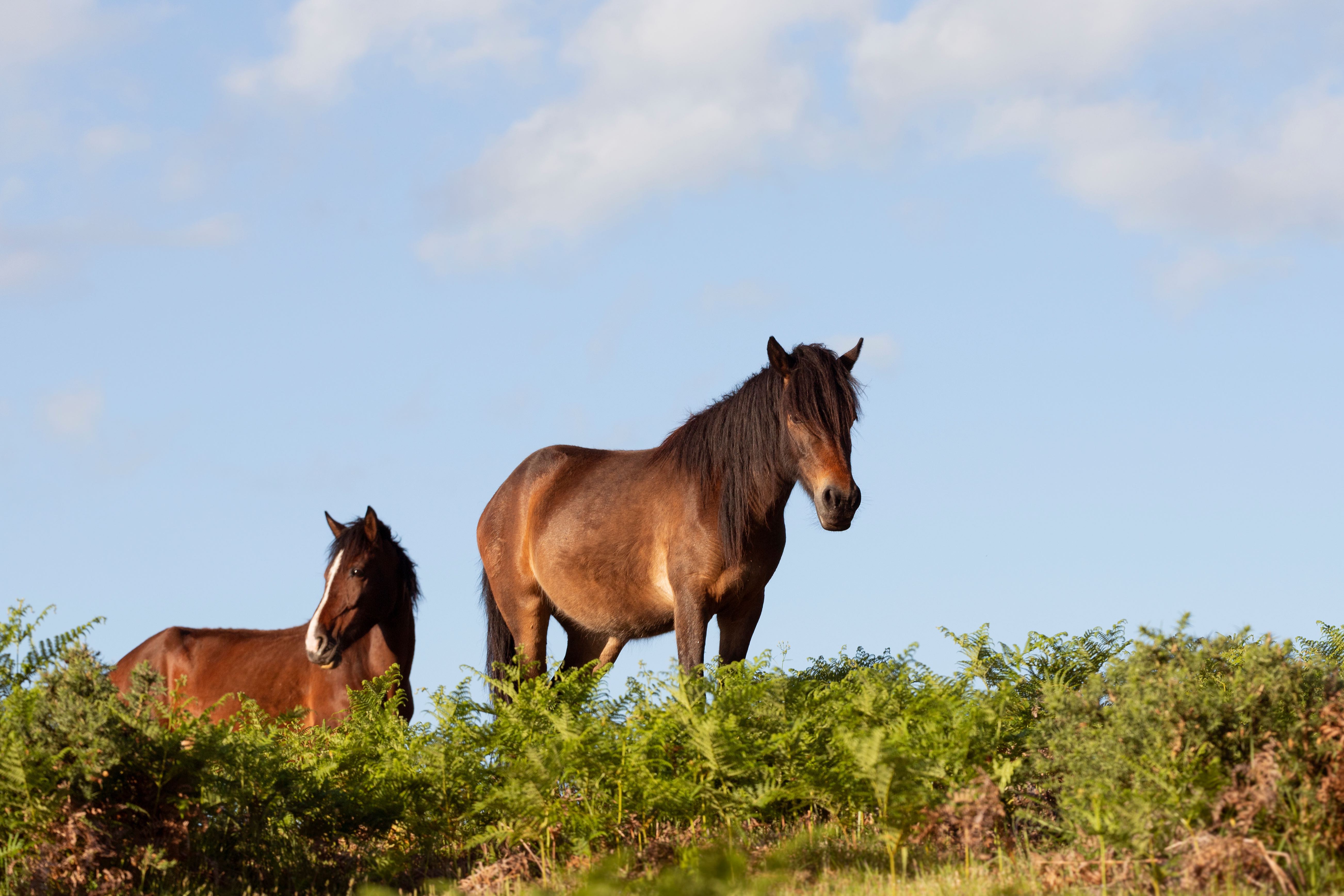
Locals and scientists call The Garrano horses the Forgotten Horse. They are native to the mountains of Portugal and are descendants of Iberian horses. People use them to carry items (a pack horse), light farm work, and free riding. Garrano horses have not evolved or changed their body structure, but these horses have become rare because of the loss of breeding. Farmers have now begun to rely on other forms of agricultural technology, no longer needing the Garrano horses.
The government protects the feral Garranos in Peneda-Geres National Park. Some of the domesticated Garranos work in Passo Travado, competing in pace races.
Nokota Horse
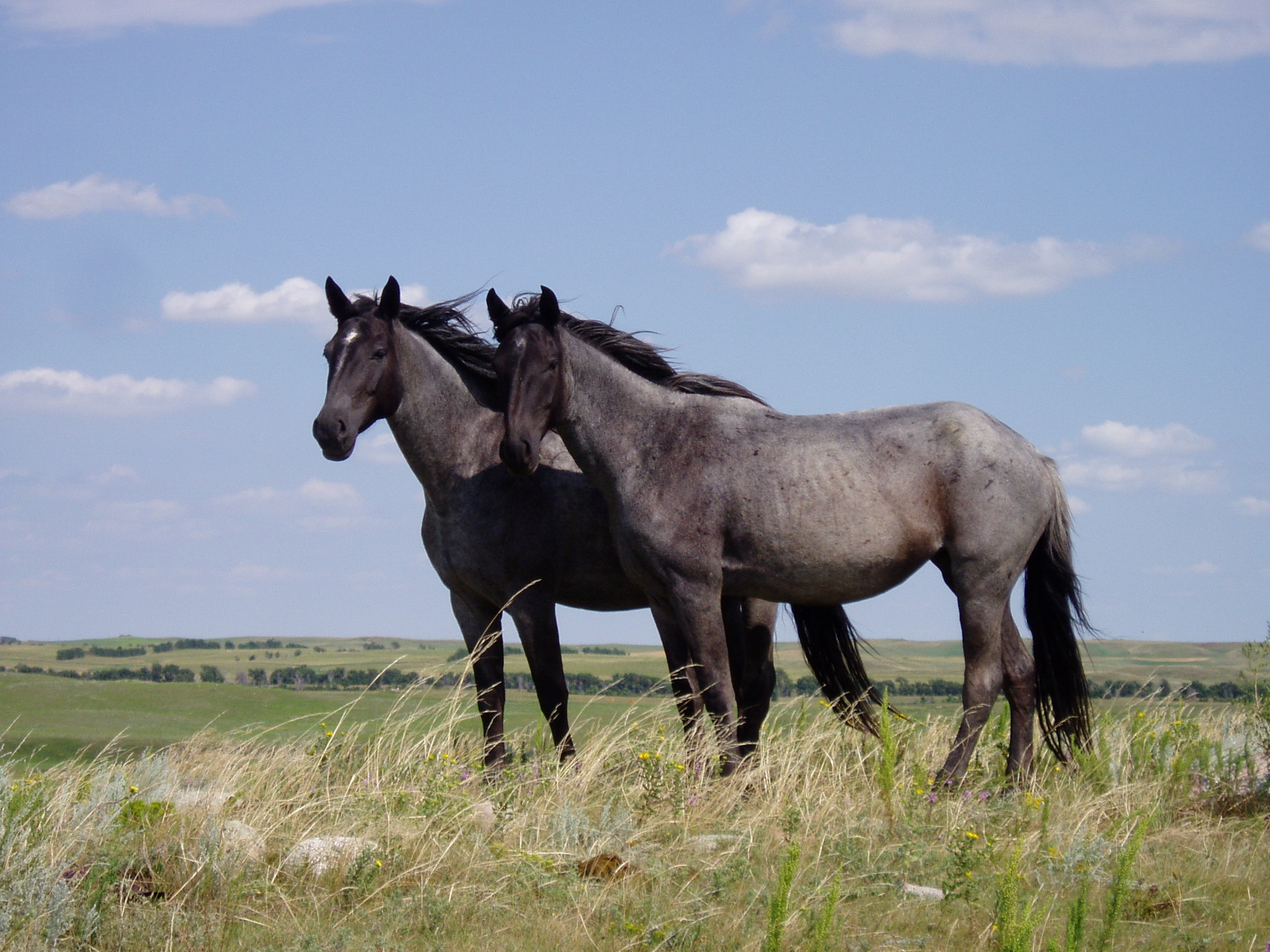
Locals are aware that you can find Nokota horses in the Badlands of North Dakota. They are a crossbreed of Native American horses, Spanish horses, and Thoroughbreds. Breeders describe Nokota horses as low-maintenance and quiet. Frontline Ranchers used them to saddle horses and as buffalo runners. Native Americans used them as war horses.
While the Nokota horses result from a diverse range of hereditary traits, they are most similar to Spanish horses. Ranchers notice Mustangs raised inside a ranch resemble Quarter Horses more. They are an intelligent breed and love to play around.
Chincoteague Pony
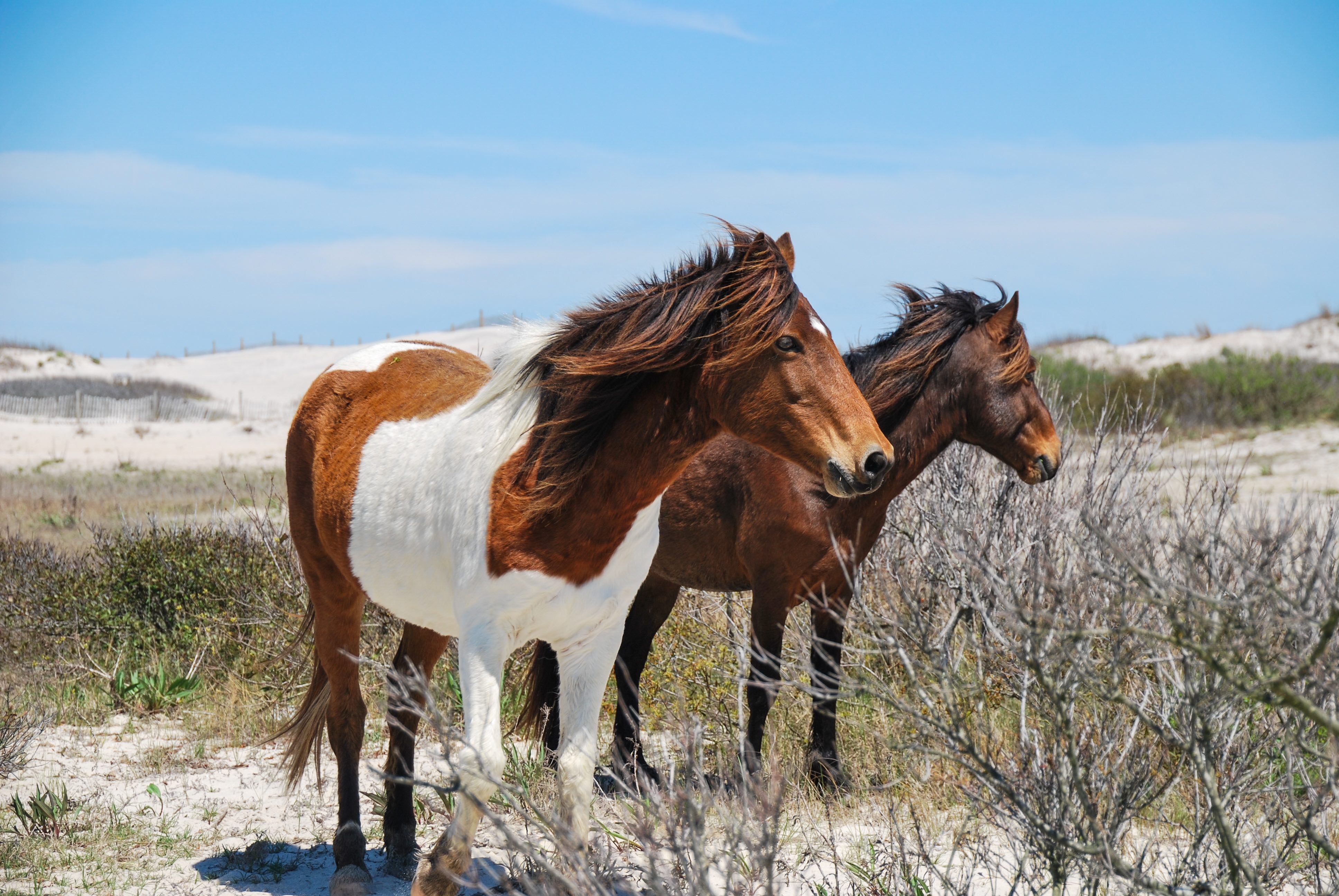
Locals call the Chincoteague ponies Assateague horses. Margeurite Henry wrote a novel called Misty of Chincoteague, which made the great Chincoteague Pony Swim famous. Volunteers auction off the Chincoteague Pony foals on the Assateague Island to use the proceeds for the feral herd.
Chincoteague ponies are popular because of their easygoing and friendly nature. It is possible to domesticate a feral Chincoteague, where some folks keep them as family pets. People who do often use them to teach children to ride horses.
Origin of Horses
All types of horses come from the same evolution. Equus Caballus is the scientific name of the horse. Where are horses native to, you ask? Horses are native to North America. The species existed almost 36 million years ago. Exporters caused their extinction in North America.
Have you ever wondered how much a horse weighs? The answer is that the average horse weighs around four hundred pounds.
What is a group of horses called?
Horses are social animals that focus on groups to survive in the wild. There are many types of horses and just like there are many colors of horses, there are also many names for a group of them. Some people call a group of horses a team. Others call them Harras. Horses owned by one person are called a string. Breeders and trainers call a group of colts a rag. Finally, experts call a group of horses used for breeding as studs.
Conclusion
We hope you learned a thing or two about the different types of horses listed here. Every horse is different, just like every person has their own personality. You can have the same connection with dog breeds and horse breeds. Still, the horse provides an almost in-sync relationship with its caregiver. If you love speed, freedom, and strength, horses will always hold a special place in your heart.
Was this page helpful?
Our commitment to delivering trustworthy and engaging content is at the heart of what we do. Each fact on our site is contributed by real users like you, bringing a wealth of diverse insights and information. To ensure the highest standards of accuracy and reliability, our dedicated editors meticulously review each submission. This process guarantees that the facts we share are not only fascinating but also credible. Trust in our commitment to quality and authenticity as you explore and learn with us.


